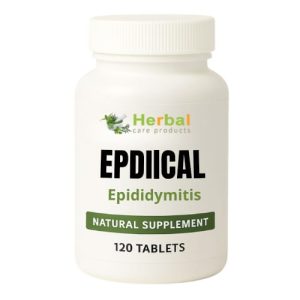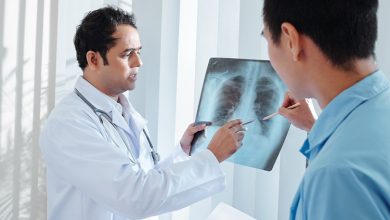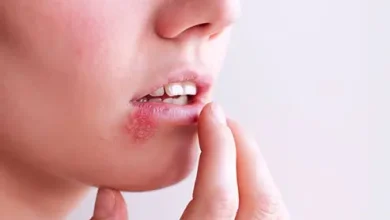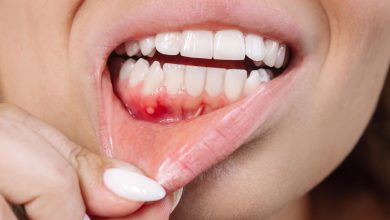10 Hidden Men’s Health Issues You Shouldn’t Ignore After 30
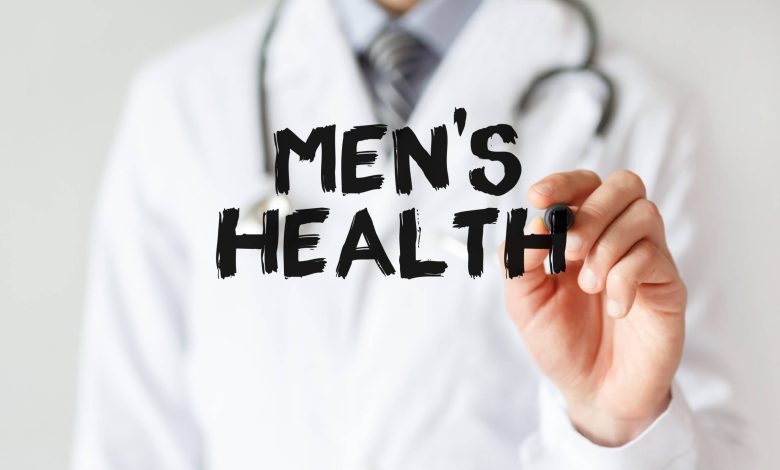
As you cross the threshold into your 30s, your body begins to whisper warnings you might easily dismiss. You may still feel youthful, capable, and untouchable—but beneath the surface, subtle changes demand your attention. While cholesterol, heart health, and prostate screenings often feature in men’s health checklists, a number of less obvious conditions lurk unseen. Ignoring these may cost you in quality of life, fertility, or even long-term wellbeing.
10 Hidden Men’s Health Issues
Here are 10 hidden men’s health issues you shouldn’t ignore after 30—and what to do about them.
1. Epididymitis
Epididymitis is inflammation of the epididymis, the tube at the back of each testicle that stores and carries sperm. It often causes scrotal pain, swelling, or a burning sensation during urination. Though acute cases may arise from bacterial infections or sexually transmitted pathogens, chronic epididymitis may present more subtly—aching, discomfort or heaviness in the testicles over weeks or months.
You must treat epididymitis promptly. Untreated cases may lead to abscess formation, infertility, or chronic pain. Antibiotics are often effective, but adjunctive interventions matter too. If you prefer a complementary route, explore Epididymitis Natural Treatment strategies—such as warm baths, scrotal elevation, anti-inflammatory diet and gentle movement—to support healing (always under medical supervision).
If relief lags, your doctor may recommend ultrasound imaging or referral to a urologist.
2. Low Testosterone (Late-Onset Hypogonadism)
After age 30, testosterone levels gradually decline—roughly 1–2% per year. Many men interpret fatigue, reduced libido, or mood shifts as “just ageing.” Yet low testosterone may contribute to obesity, insulin resistance, osteoporosis, and depression.
If you notice persistent fatigue despite good sleep, diminished drive, loss of muscle mass, or erectile trouble, ask your physician for a hormone panel. Treatment options include lifestyle shifts—resistance training, adequate sleep, weight loss—and, where appropriate, testosterone replacement therapy (TRT). Monitor risks and benefits closely with your doctor.
3. Sleep Apnoea
When your airway collapses momentarily during sleep, you may wake gasping or snore loudly through the night. That’s obstructive sleep apnoea (OSA). Across decades, OSA damages cardiovascular health, ramps up blood pressure, and increases diabetes risk.
You might shrug off daytime sleepiness as stress, but it deserves attention. Ask your doctor about a sleep study if you snore, wake frequently, or suffer daytime fatigue. Continuous positive airway pressure (CPAP) therapy or lifestyle changes—weight loss, avoiding alcohol before bed—can yield marked improvements.
4. Erectile Dysfunction (ED)
Between 30 and 40, ED may stem from stress, lifestyle, medications, or vascular trouble. While occasional occasional difficulty is common, persistent ED signals that your vascular or hormonal systems may be under strain.
Don’t wait. Seek assessment early. Lifestyle interventions—quitting smoking, exercising, improving diet—often help. Your doctor may also explore medications or therapies. Since ED can hint at cardiovascular disease, addressing it could help uncover hidden risk.
5. Premature Ejaculation (PE)
Many men suffer in silence with ejaculation occurring sooner than they or their partners would like. While it doesn’t directly threaten health, Premature Ejaculation can erode confidence, strain relationships, and lead to avoidance of intimacy.
You can try behavioural techniques (like “stop-start”), pelvic floor exercises or topical desensitisers. If the problem persists, discuss with a sexual health specialist. Sometimes SSRIs or other prescribed treatments help.
6. Interstitial Cystitis / Chronic Pelvic Pain Syndrome
Pain or discomfort in the bladder, perineum or pelvic floor region without a clear urinary infection could be a sign of chronic pelvic pain syndrome (CPPS). You may feel burning, frequent urination, or a dull ache between the scrotum and anus.
Correct diagnosis usually involves ruling out infection, stones or neurological problems. Treatments may include pelvic floor physiotherapy, anti-inflammatories, bladder training, and stress management. You might also investigate Herbal Remedies for Epididymitis or phytotherapies aimed at soothing inflammation in pelvic tissues—again, only under medical guidance.
7. Varicocele
A varicocele describes enlarged veins within the scrotum, similar to varicose veins in the legs. It often causes a dragging sensation or infertility by elevating testicular temperature.
If you detect a soft “bag of worms” above the testis or suspect an abnormal sperm count, ask for a scrotal ultrasound or semen analysis. Mild cases may just need monitoring; surgical ligation or embolisation offers relief and may restore fertility.
8. Prostatitis
Inflammation of the prostate (prostatitis) can cause urinary urgency, painful urination, perineal discomfort, or even flu-like symptoms. Acute prostatitis comes on quickly; chronic prostatitis evolves with more subtle signs.
You may benefit from antibiotics, alpha-blockers, heat therapy or pelvic floor physiotherapy. Some men also turn to Premium Health Supplements designed to support prostate function—such as saw palmetto or beta-sitosterol—but their efficacy varies. Always discuss any supplement use with your physician to avoid interactions.
9. Hypogonadism from Pituitary or Adrenal Disorders
Sometimes low testosterone or sexual dysfunction stems not from the testes, but from upstream issues in the pituitary or adrenal glands. Tumours, hormonal imbalances or adrenal insufficiency may masquerade as “low testosterone.”
If you present with fatigue, weight loss, dizziness, or sexual changes plus low testosterone levels, request MRI imaging, adrenal panels, and pituitary hormone testing. Identifying and treating the root cause is essential.
10. Sexually Transmitted Infections (STIs) with Atypical Symptoms
You probably know the common STIs—gonorrhoea, chlamydia, syphilis—but often they mimic urinary tract infections, cause mild discharge, or lurk asymptomatically. Left untreated, they may lead to epididymitis, infertility, or systemic complications.
Use condoms, get screened regularly if you have new partners, and ask your physician for nucleic acid amplification tests (NAATs) when symptoms arise. When you detect an STI, treatment typically involves antibiotics and partner notification.
What You Should Do Next — Prevention & Early Action
1. Schedule regular check-ups
At least once a year, see a general practitioner or urologist and mention any subtle symptoms—pain, fatigue, libido changes, urinary differences. Small complaints may show early disease.
2. Adopt a “health first” lifestyle
- Exercise: include strength training and cardio to support hormonal balance and circulation.
- Diet: favour whole foods, reduce refined sugar and processed food. Include anti-inflammatory foods like oily fish, nuts, berries, greens.
- Weight and waistline: keep body fat under control; visceral fat harms glands and arteries.
- Sleep hygiene: aim for 7–8 hours per night and maintain a consistent schedule.
- Stress control: chronic stress blunts testosterone and immunity.
3. Avoid habits that hurt
Quit smoking, limit excess alcohol, reduce exposure to endocrine disruptors (bisphenol A, phthalates). Wear protective gear (scrotal support, safe practices) during sports or heavy lifting.
4. Know when to act
Set a “red-flag” mental list:
- Any testicular pain lasting more than 24–48 hours
- Reduced erections or libido for several months
- New urinary symptoms (burning, frequency, blood)
- Infertility attempts with no success after six months
Once you see a specialist, engage actively: ask about imaging, lab studies, and emerging adjuncts like herbal therapy or supplements where evidence supports them. If you do try an adjunct route, be sure any Premium Health Supplements you take have high quality, third-party testing and that they don’t clash with your medications.
In some cases, you may be curious to explore Epididymitis Natural Treatment or Herbal Remedies for Epididymitis. These can include soothing botanicals, herbal anti-inflammatories, pelvic rest, and heat techniques—but always coordinate with your physician. Never replace standard therapy with herbs without medical oversight.
How These Issues Slip Under the Radar
- Attribution to age or stress: Many men dismiss libido, fatigue or urinary changes as “just getting older” or “working too hard.”
- Embarrassment or stigma: Sexual health or scrotal pain feels taboo—some men wait months before mentioning it.
- Less obvious symptoms: Chronic prostatitis or pelvic pain may mimic gastrointestinal or orthopaedic issues.
- Reluctance to test: Fear of needles, stigma or cost deters many men from getting hormone panels or imaging.
- Poor continuity of care: Visiting different doctors or not following up can fragment evaluation.
You can overcome all these barriers by viewing your body like a machine—minor malfunctions need attention before they cascade.
How to Organise Content with Authors (for a Clinic Blog or Health Site)
If you are supervising content writers or guest contributors—and want your site to cover these topics comprehensively—here’s a simple structure to help teams deliver content that resonates with patients and brings useful depth.
| Topic / Article | Audience Question | Key Sections | Suggested Tone / Style |
| Epididymitis: Causes, Symptoms and Treatments | “Why does my scrotum ache & what do I do?” | Definition, causes, symptoms, diagnosis, medical treatment, lifestyle & natural measures, FAQs | Empathetic, reassuring, clear |
| Herbal Remedies for Epididymitis | “Do herbs help my epididymitis?” | Overview, evidence, risks, safe integration, patient stories | Balanced, evidence-based, cautious |
| Premium Health Supplements for Men’s Sexual & Reproductive Health | “Are supplements safe & effective?” | Industry standards, evidence, recommended supplements, caution, regulation | Transparent, informative, no hype |
| Erectile Dysfunction After 30 | “Why can’t I maintain my erection?” | Vascular causes, lifestyle links, diagnosis, treatment options | Nonjudgmental, empowering |
| Chronic Pelvic Pain Syndrome in Men | “Why do I have pelvic pain with no infection?” | Diagnostic criteria, overlap with urinary issues, therapies (physio, meds, herbs) | Clinical but accessible |
| Sleep Apnoea & Testosterone | “Is my snoring hurting my hormones?” | OSA mechanics, health impacts, testing, interventional basics | Relatable, explanatory |
| Testosterone Decline Over Time | “Is a bit of low T just ageing?” | Normal decline, symptoms vs disease, when to test, therapies | Cautious, precise |
| Varicocele and Fertility | “Could my varicocele affect my sperm?” | Pathophysiology, diagnosis, fertility links, interventions | Clear, evidence-based |
| Prostatitis in Men over 30 | “Why do I have urinary discomfort & pelvic pain?” | Acute vs chronic, diagnosis, treatments, lifestyle supports | Reassuring, actionable |
| STI Awareness for Men over 30 | “Could a hidden infection be the cause?” | Common STIs, asymptomatic risk, testing, prevention | Direct, urgency-driven |
You may break these into multi-part series or clusters. Always begin with patient concerns (“Why do I feel this?”), proceed to medical validation (“What could cause it?”), then offer evidence-based interventions, while integrating safe complementary options. In each article, link to Epididymitis Natural Treatment, Herbal Remedies for Epididymitis, and Premium Health Supplements where relevant so your internal linking remains strong and helpful.
Common Questions Patients Ask (and How You Should Answer Them)
Q: Can I treat epididymitis only with herbs or supplements?
A: You should never replace standard care (antibiotics, rest, urinary measures) with herbal remedies. Use them, if at all, only as adjuncts under physician supervision.
Q: Are testosterone injections dangerous?
A: They carry risks (polycythaemia, prostate effects, fertility suppression). That’s why you should monitor blood counts, prostate health and gonad function over time.
Q: If I have ED, does it mean I’ll get a heart attack?
A: Not necessarily, but ED often shares vascular risk factors with heart disease. Evaluating ED can be a window into cardiovascular health.
Q: How long should I try lifestyle changes before drugs?
A: Give diet, exercise, weight control, sleep and stress management a solid 3–6 months. If symptoms persist, escalate evaluation.
Q: Are all supplements safe?
A: No. Quality varies. Some have contaminants, interact with medications, or lack clinical backing. Always choose trusted brands and talk to your doctor.
Final Thoughts
After 30, you must sharpen your health radar. The 10 hidden men’s health issues described here all have a “silent phase” where damage can accrue before you notice. Don’t wait until pain, fertility struggle, or urinary collapse forces your hand.
If you begin by watching for subtle symptoms—changes in libido, sleep quality, urinary patterns, scrotal sensations—and act early, you preserve not only your reproductive health but your cardiovascular, hormonal and mental wellbeing. Use Epididymitis Natural Treatment, Herbal Remedies for Epididymitis or Premium Health Supplements only as informed adjuncts—not substitutes.

